Ndovu Team Ithumba Update: 01 May 2008
Participants
Patrick Mutuku Mutua Koti Lemanten Lambarakwe James Lodungokiyok Musau Kitulya Peter Ndungu 2 KWS Rangers
Areas Covered
During the course of this month the areas covered included Lagga-kungu, Kyamanyenze, Sheldrick blind, Kiasa, Macho kobo, Kanziko, Umbi, Tundani, Kyaerock and behind the Ithumba Hill.
75 SNARES COLLECTED
Findings The May patrols were concentrated around the water points and wetlands as these are the areas that animals frequent during the dry season due to the availability of water. This is also where poachers set their snares and erect shooting platforms.
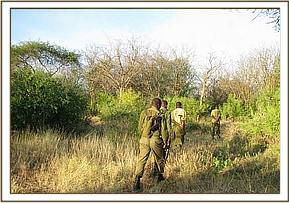
Observable Evidence Most of the areas patrolled by the team during the course of the month recorded a drop in the number of snares lifted. This is not due to a decrease in the number of poachers but to a change in the poacher’s tactics with the poachers opting to move deeper into the park where they target large animals such as buffaloes and elephants. We have found that poachers use bicycles to facilitate their movements during their poaching expeditions. During one of our patrols we found a bicycle together with 5kgs of maize flour and a roll of bang.
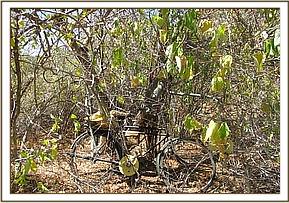


Lagga-kugu, Umbi, Kanziko These areas area all found along the park boundaries. During the team’s patrols we were able to identify fresh footprints that led us to a poacher’s camp. At a distance of about 200 meters from the camp a shooting platform had been erected. The poachers use the platforms to target large animals. We were also able to lift 25 snares from these areas.
Sheldrick blind, Kiasa The team patrolled these areas and once again came across several footprints. The footprints were followed for a whole day. They led the team deeper into the park past Kiasa hill. We continued to follow the footprints the next day and were able to lift two snares that targeted large game such as buffaloes and elephants.
Mach-kobo, Tundani, Kyamanyenze, Kyae-rock During our patrols in these areas the team came across a shooting platform that had been erected along the Tiva River, an area frequented by animals in search of water to quench their thirst. We were able to lift 30 snares from these areas. Honey harvesting inside the park is at an all time high leading us to believe that most of the footprints we came across which seemed to lead to nowhere belonged to the honey harvesters.
Kalovoto, Ithumba Hill Poachers tend to monitor the movement of animals as they change their territories due to the natural ecosystem balancing patterns, when animals will be seen to leave from one area to go to another. This usually happens during the dry season when browse and water become scarce forcing the animals to congregate around the few remaining waterholes. The team visited these waterholes and was able to lift 18 snares behind the Ithumba hill waterhole. Fifteen of the lifted snares targeted small game, and 3 targeted large game.
COMMUNITY AWARENESS Ecological Trip The team organized two ecological trips to Tsavo East National Park. The schools which benefited from the trips were Kavete primary school and Kwa-Kimweli primary school.
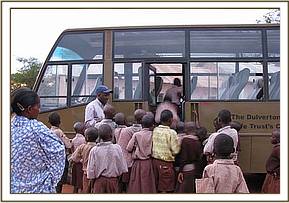

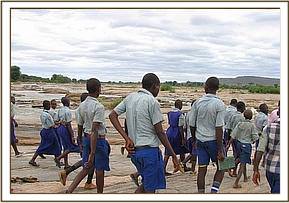

During the ecological trip the students saw herds of elephants, buffaloes, and giraffes. They also saw baboons, jackals, impalas, warthogs, lesser kudus, lions, dikdiks, waterbucks and a cheetah.
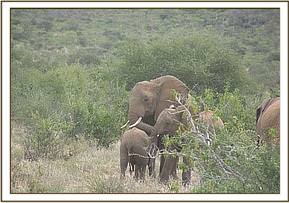

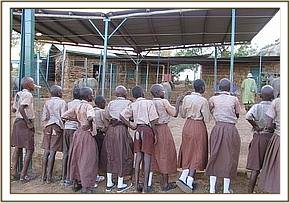


Sports equipment donation The David Sheldrick Wildlife Trust donated sports equipment to Tsavo primary school. The school is located next to the gate of the Tsavo East Northern area park boundary. The school community was extremely appreciative as the sports equipment was desperately needed.
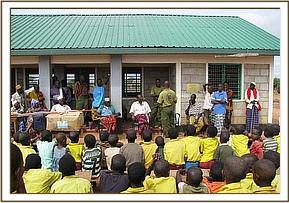
Sports equipment was also donated to Kone Primary school which is located in the Tana-River District on the eastern side of the Tsavo national park boundary and is inhabited by the Orma community. The Orma community helps us and KWS by giving us intelligence reports about bandits operations. It is therefore of paramount importance to create a good relationship with this community. On the 28th of the month the school benefited from a donation of sports equipment costing more than 40,000 shillings.
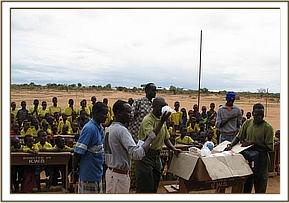
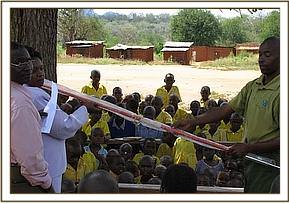

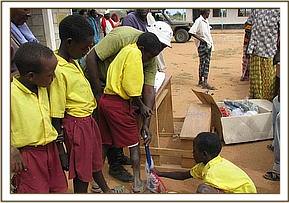
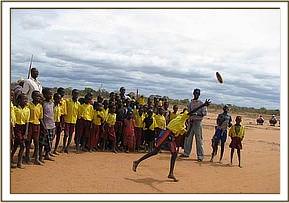
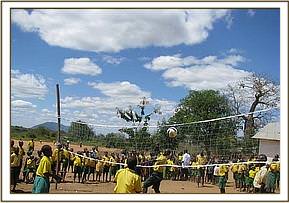
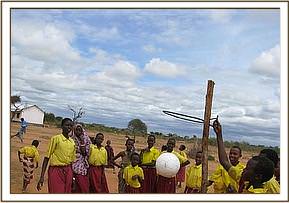
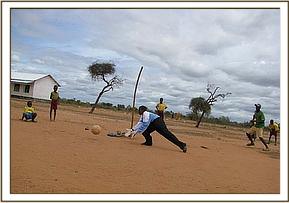
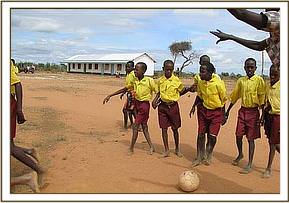

Report by Patrick Mutuku